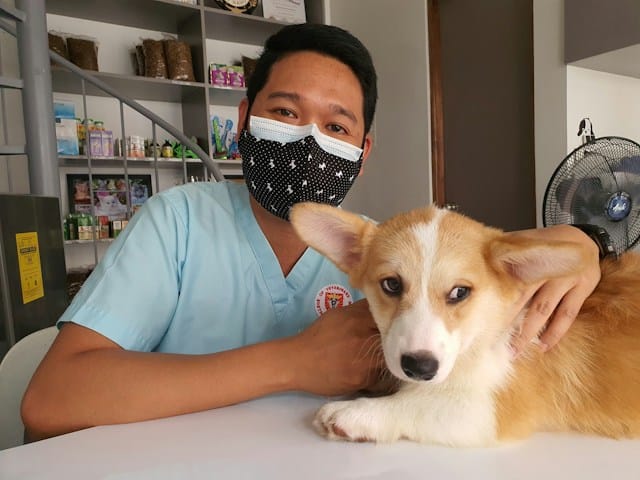In today’s world, pets are not just animals, they are cherished members of our families. We go to great lengths to ensure their happiness and well-being, providing them with the best food, essential grooming, regular vet visits, and plenty of affection. However, just like humans, pets are also susceptible to accidents and illnesses that can lead to hefty vet bills. This is where pet insurance comes into the picture.
Understanding Pet Insurance
Pet insurance is a type of coverage designed to help offset the costs of medical care for your pets. Like human health insurance, it has premiums, deductibles, and copays. It can cover a range of health conditions and treatments, from routine wellness visits to serious illnesses and accidents.
En parallèle : How to manage your pet’s weight effectively
Pet insurance can be a lifesaver when your furry friend encounters unexpected health issues. It allows you to proceed with the necessary treatment without the worry of prohibitive costs. However, it’s essential to understand how these plans work and what they cover before purchasing one, as not all pet insurance policies are created equal.
What Pet Insurance Covers
Pet insurance coverage varies depending on the policy. The comprehensive coverage usually includes accidents, illnesses, and wellness care. Accidents can range from minor incidents like cuts and sprains to major ones like fractures and ingestion of foreign objects. Illness coverage typically includes common ailments like ear infections, digestive problems, and allergies, as well as serious conditions like cancer and heart disease.
A lire également : The best fish breeds for beginners
Wellness plans are typically add-on options that cover routine care such as vaccinations, annual exams, and preventive treatments. Some policies may also include dental care, behavioral therapy, and alternative treatments like acupuncture.
However, it’s crucial to note that pet insurance often has exclusions. Pre-existing conditions, certain breeds, older pets, and hereditary or congenital conditions might not be covered. It’s essential to read the fine print and ask questions to ensure you are getting the best coverage for your pet.
The Cost of Pet Insurance
The cost of pet insurance can vary greatly depending on several factors, including the type of pet, the breed, the age, the health status, and the level of coverage chosen. Typically, plans can range anywhere from $10 to $100 a month.
While this may seem like a significant expense, it’s important to weigh it against the potential vet costs you could face without insurance. Treating a pet for cancer, for example, can run into thousands of dollars. A broken limb or a surgical procedure can also be extremely expensive.
However, keep in mind that like human health insurance, pet insurance also has deductibles, co-pays, and maximum payouts. Be sure to consider these factors when evaluating the cost and benefits of a plan.
How to Choose the Best Pet Insurance
Choosing the best pet insurance requires careful consideration of your pet’s needs and your financial situation. Start by evaluating your pet’s breed, age, and health status. Consider the common health issues they might face and the potential cost of treating those conditions.
Next, review the different coverage options available. Look for a plan that covers accidents, illnesses, and wellness visits. Evaluate the exclusions and limitations of each plan. Check the deductible, the co-pays, and the maximum payouts.
Also, look at the reputation and customer service of the insurance company. Read reviews and ask for recommendations. Make sure the company is responsive and has a straightforward claims process.
Is Pet Insurance Worth it?
To determine whether pet insurance is worth it, consider the potential vet costs you could face without coverage. If you have a breed that’s prone to certain health conditions or if your pet is older, insurance could save you a substantial amount of money in the long run.
Also, consider your ability to handle significant and unexpected vet bills. If a hefty vet bill would put you in a financial bind, insurance might be a wise investment.
However, if your pet is generally healthy and you have the financial means to cover unexpected vet costs, you might opt to forego insurance. Instead, you could set up a dedicated savings account for potential pet health costs.
Ultimately, the decision to get pet insurance should be based on a careful evaluation of your pet’s health risks and your financial situation. It’s a personal decision that can bring significant peace of mind, knowing that you’re prepared to provide the best care for your beloved pet, no matter what health challenges they might face.
Emergency Situations and Pet Insurance
Every pet owner knows that accidents and illnesses can happen at any time. Just as you wouldn’t want to be caught off guard with a health emergency without having health insurance, the same principle applies to your pets. It’s crucial to contemplate the potential benefits of pet insurance for handling emergencies.
Pet insurance may offer coverage for various emergency situations. This may include severe accident illness, breed specific conditions, and cancer treatment. Depending on the policy, it might also provide coverage for emergency vet visits, hospital stays, surgeries, and medications.
Imagine your pet ingests something harmful, or worse, gets hit by a car. These scenarios can lead to dire consequences and high medical bills. Emergency surgery, intensive care, and follow-up treatments can run into several thousands of dollars. Having pet insurance can ease the financial burden and allow you to focus on your pet’s recovery.
If your pet is young and generally healthy, you might think that emergency coverage is unnecessary. But remember, accidents are unpredictable, and it’s always better to be safe than sorry. Plus, some insurance companies offer accident-only plans that are cheaper than comprehensive ones.
However, bear in mind the waiting period before your coverage kicks in. This is the time after you buy your policy during which any illnesses or injuries that occur are not covered. The waiting period can vary from one company to another, so don’t forget to check this detail when purchasing pet insurance.
Pet Insurance: A Final Weigh-In
As a pet owner, the well-being of your beloved companion is a top priority. Part of ensuring their health involves making difficult decisions about issues like pet insurance. It’s a decision that requires thoughtful consideration of several factors including your pet’s health status, their breed, your financial situation, and your willingness to deal with unexpected vet bills.
Pet insurance offers a safety net against high medical costs associated with accident illness, disease, and other unforeseen health issues. It allows you to pursue the best veterinary care without the stress of enormous bills, providing you peace of mind.
On the flip side, pet insurance comes with a cost. Premiums, deductibles, and copays can add up, and there may be exclusions and maximum payouts that limit the benefits. If you have a healthy pet and a robust emergency fund, these costs might outweigh the benefits.
Ultimately, the question of whether pet insurance is worth it depends on your individual circumstances. If the worst happens – a severe accident, a catastrophic illness, or a sudden health emergency – would you be able to afford the vet bills? If the answer is no, pet insurance might be a worthy investment.
In the end, what matters most is ensuring that your pet receives the necessary care when they need it the most. Whether you achieve this through pet insurance or other means is entirely up to you. Be proactive in your pet’s health, educate yourself about all the available options, and make an informed decision that best suits your pet’s needs and your financial situation.






